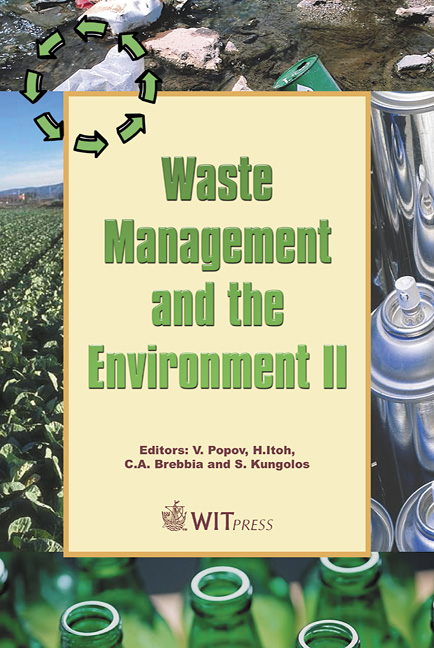Characterization Of Glass And Glass-ceramics Obtained From Industrial By-products
Price
Free (open access)
Transaction
Volume
78
Pages
9
Published
2004
Size
389 kb
Paper DOI
10.2495/WM040371
Copyright
WIT Press
Author(s)
A. Karamberi & A. Moutsatsou
Abstract
In the current study the utilization of industrial by-products for the production of glass and glass-ceramics was examined. Three industrial wastes were selected due to their mass production: fly ash derived from the combustion of lignite, blast furnace slag from the production of Fe-Ni and blast furnace slag from the production of steel. The capability of the above materials to be vitrified and subsequently devitrified was investigated. Mixtures were obtained using the fly ash, slag, glass cullet, quartz and melting agents at the appropriate proportions and the vitrification process, which took place at 1350-1450oC, was followed. o chemical durability and the stability of the raw materials as well as of the final products were determined using standard procedures. X-ray and Scanning Electron Microscopy techniques were employed to identify the microstructure of the stabilized products before and after the heat treatment. The glasses obtained displayed good durability and negligible leachability. Furthermore, the results showed that the crystalline phase is greatly dependent on the structure of the byproduct and the heat treatment. Keywords: industrial waste, vitrification, de-vitrification, glass, glass-ceramics, fly ash, blast furnace slag. 1 Introduction The use of waste materials as a partial or total replacement of virgin raw materials for the production of construction or other purposes has become a vital part of the waste management in developed countries. Great amounts of solid Crystallization was achieved by heat treatment at 900, 950 and 1000 C. The
Keywords
industrial waste, vitrification, de-vitrification, glass, glass-ceramics, fly ash, blast furnace slag.





